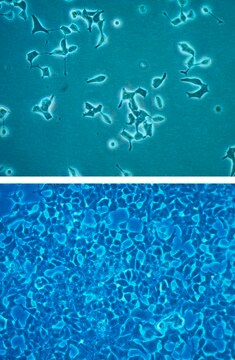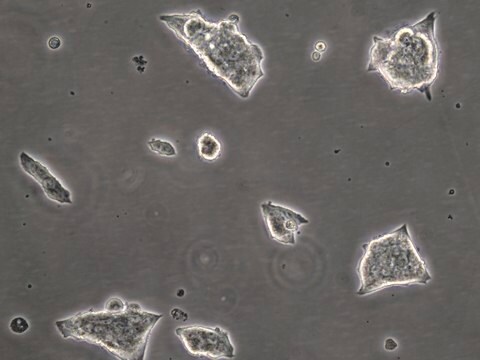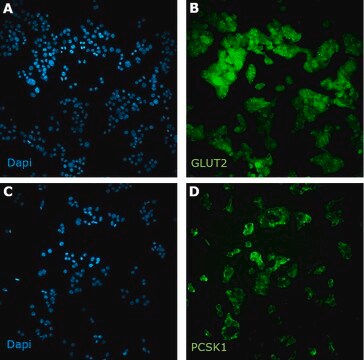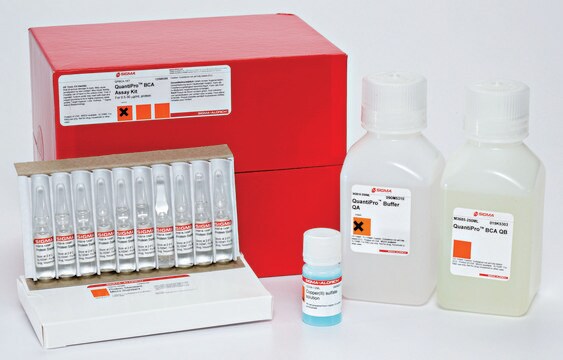SCC208
Linea cellulare di insulinoma di ratto INS-1 832/3
Rat
Sinonimo/i:
INS1 832/3, INS-1 (832/3), 832/3
About This Item
Prodotti consigliati
product name
Linea cellulare di insulinoma di ratto INS-1 832/3, INS-1 832/3 rat insulinoma cell line is a useful model for insulin secretion regulation and pancreatic islet beta-cell function studies.
Origine biologica
rat
tecniche
cell culture | mammalian: suitable
Condizioni di spedizione
ambient
Descrizione generale
Origine:
L'INS-1 832/3 è un derivato delle cellule INS-1 originariamente create da un insulinoma indotto da raggi X nel ratto1. La linea cellulare INS-1 832/3 è un sottoclone di INS-1 che è stato trasfettato in modo stabile con un plasmide per l'espressione di insulina umana con promotore CMV e un marcatore di resistenza alla geneticina (G418) per la selezione .
Descrizione della linea cellulare
Applicazioni
Metabolismo
Diabete
Qualità
• Le cellule sono risultate negative al test per le malattie infettive eseguito con un pannello Mouse/Rat Comprehensive CLEAR di Charles River Animal Diagnostic Services.
• L′origine murina delle cellule così come la loro negatività a un′eventuale contaminazione con altre specie, quali ratto, criceto cinese, criceto dorato e primate umano e non umano (NHP), viene verificata tramite un pannello Contamination CLEAR di Charles River Animal Diagnostic Services.
• Le cellule sono negative alla contaminazione da micoplasmi.
Stoccaggio e stabilità
Esclusione di responsabilità
Salvo diversa indicazione nel nostro catalogo o in altra documentazione fornita dall′azienda insieme al prodotto, i nostri prodotti sono destinati esclusivamente a scopi di ricerca e non devono essere utilizzati per altre finalità, inclusi a titolo esemplificativo ma non esaustivo, fini commerciali non autorizzati, applicazioni diagnostiche in vitro, usi terapeutici ex vivo o in vivo o qualsiasi altro tipo di assunzione o applicazione destinata agli esseri umani o agli animali.
Codice della classe di stoccaggio
12 - Non Combustible Liquids
Classe di pericolosità dell'acqua (WGK)
WGK 1
Punto d’infiammabilità (°F)
Not applicable
Punto d’infiammabilità (°C)
Not applicable
Certificati d'analisi (COA)
Cerca il Certificati d'analisi (COA) digitando il numero di lotto/batch corrispondente. I numeri di lotto o di batch sono stampati sull'etichetta dei prodotti dopo la parola ‘Lotto’ o ‘Batch’.
Possiedi già questo prodotto?
I documenti relativi ai prodotti acquistati recentemente sono disponibili nell’Archivio dei documenti.
Il team dei nostri ricercatori vanta grande esperienza in tutte le aree della ricerca quali Life Science, scienza dei materiali, sintesi chimica, cromatografia, discipline analitiche, ecc..
Contatta l'Assistenza Tecnica.






